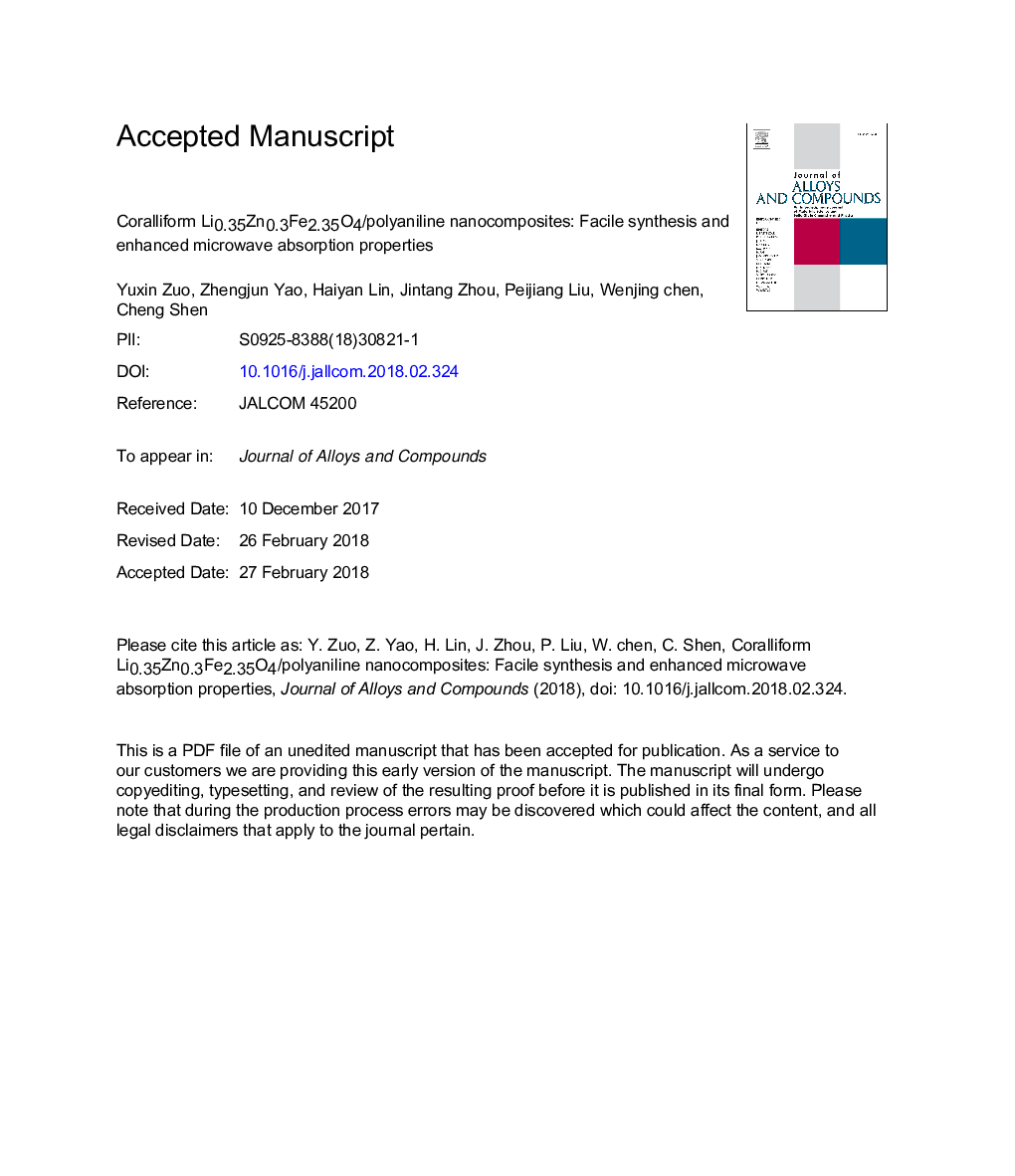| Article ID | Journal | Published Year | Pages | File Type |
|---|---|---|---|---|
| 7992724 | Journal of Alloys and Compounds | 2018 | 23 Pages |
Abstract
Coralliform polyaniline (PANI) nanorods were successfully grafted onto the surface of Li0.35Zn0.3Fe2.35O4 (LZFO) particles by interfacial polymerization. The LZFO particles were prepared by sol-gel method and decorated via the coralliform PANI nanorods. The structure and morphology were systematically investigated by Fourier transform infrared spectra (FTIR), X-ray diffraction (XRD), and scanning and transmission electron microscopy (SEM/TEM). The LZFO/PANI nanocomposite with novel coralliform microtopography was prepared by using an efficient, simple, and controllable two-step method. The electromagnetic parameters with different weight ratios of ferrite and aniline monomer were investigated at the 0.5-18â¯GHz frequency range by using vector network analyzers. Reflection loss (RL) of different thicknesses was calculated using the electromagnetic parameter according to the transmission line theory. The LZFO/PANI nanocomposite, optimized with a weight ratio of 1:2 of ferrite to aniline monomer, showed that the maximum RL value reached â36.9â¯dBâ¯at 12.4â¯GHz with the thickness of 2.1â¯mm, and the bandwidth below â10â¯dB was at 4.24â¯GHz (11.26-15.5â¯GHz). The enhanced microwave absorption properties of LZFO/PANI nanocomposites were chiefly attributable to the coralliform structure and improved impedance matching between the dielectric and magnetic loss. This study proves that LZFO/PANI nanocomposites can be a potential candidate for efficient microwave absorption materials.
Related Topics
Physical Sciences and Engineering
Materials Science
Metals and Alloys
Authors
Yuxin Zuo, Zhengjun Yao, Haiyan Lin, Jintang Zhou, Peijiang Liu, Wenjing Chen, Cheng Shen,
